Xuezhi Fang
If an LLM Were a Character, Would It Know Its Own Story? Evaluating Lifelong Learning in LLMs
Mar 30, 2025Abstract:Large language models (LLMs) can carry out human-like dialogue, but unlike humans, they are stateless due to the superposition property. However, during multi-turn, multi-agent interactions, LLMs begin to exhibit consistent, character-like behaviors, hinting at a form of emergent lifelong learning. Despite this, existing benchmarks often fail to capture these dynamics, primarily focusing on static, open-ended evaluations. To address this gap, we introduce LIFESTATE-BENCH, a benchmark designed to assess lifelong learning in LLMs. It features two episodic datasets: Hamlet and a synthetic script collection, rich in narrative structure and character interactions. Our fact checking evaluation probes models' self-awareness, episodic memory retrieval, and relationship tracking, across both parametric and non-parametric approaches. Experiments on models like Llama3.1-8B, GPT-4-turbo, and DeepSeek R1, we demonstrate that nonparametric methods significantly outperform parametric ones in managing stateful learning. However, all models exhibit challenges with catastrophic forgetting as interactions extend, highlighting the need for further advancements in lifelong learning.
Position-Aware Depth Decay Decoding ($D^3$): Boosting Large Language Model Inference Efficiency
Mar 11, 2025Abstract:Due to the large number of parameters, the inference phase of Large Language Models (LLMs) is resource-intensive. Unlike traditional model compression, which needs retraining, recent dynamic computation methods show that not all components are required for inference, enabling a training-free pipeline. In this paper, we focus on the dynamic depth of LLM generation. A token-position aware layer skipping framework is proposed to save 1.5x times operations efficiently while maintaining performance. We first observed that tokens predicted later have lower perplexity and thus require less computation. Then, we propose a training-free algorithm called Position-Aware Depth Decay Decoding ($D^3$), which leverages a power-law decay function, $\left\lfloor L \times (\alpha^i) \right\rfloor$, to determine the number of layers to retain when generating token $T_i$. Remarkably, without any retraining, the $D^3$ achieves success across a wide range of generation tasks for the first time. Experiments on large language models (\ie the Llama) with $7 \sim 70$ billion parameters show that $D^3$ can achieve an average 1.5x speedup compared with the full-inference pipeline while maintaining comparable performance with nearly no performance drop ($<1\%$) on the GSM8K and BBH benchmarks.
Sketch: A Toolkit for Streamlining LLM Operations
Sep 05, 2024



Abstract:Large language models (LLMs) represented by GPT family have achieved remarkable success. The characteristics of LLMs lie in their ability to accommodate a wide range of tasks through a generative approach. However, the flexibility of their output format poses challenges in controlling and harnessing the model's outputs, thereby constraining the application of LLMs in various domains. In this work, we present Sketch, an innovative toolkit designed to streamline LLM operations across diverse fields. Sketch comprises the following components: (1) a suite of task description schemas and prompt templates encompassing various NLP tasks; (2) a user-friendly, interactive process for building structured output LLM services tailored to various NLP tasks; (3) an open-source dataset for output format control, along with tools for dataset construction; and (4) an open-source model based on LLaMA3-8B-Instruct that adeptly comprehends and adheres to output formatting instructions. We anticipate this initiative to bring considerable convenience to LLM users, achieving the goal of ''plug-and-play'' for various applications. The components of Sketch will be progressively open-sourced at https://github.com/cofe-ai/Sketch.
Open-domain Implicit Format Control for Large Language Model Generation
Aug 08, 2024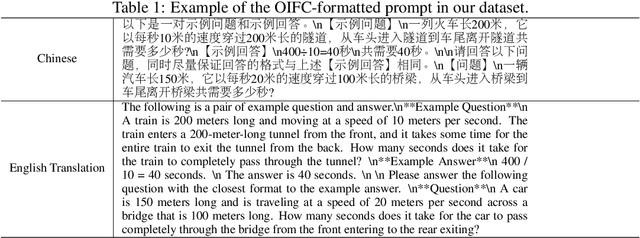

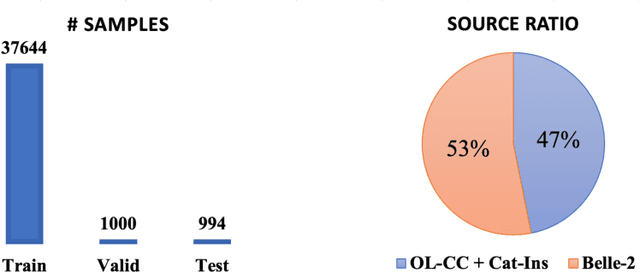
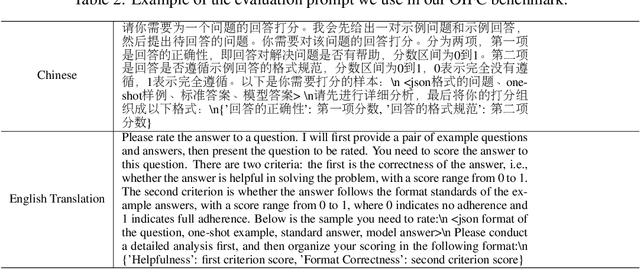
Abstract:Controlling the format of outputs generated by large language models (LLMs) is a critical functionality in various applications. Current methods typically employ constrained decoding with rule-based automata or fine-tuning with manually crafted format instructions, both of which struggle with open-domain format requirements. To address this limitation, we introduce a novel framework for controlled generation in LLMs, leveraging user-provided, one-shot QA pairs. This study investigates LLMs' capabilities to follow open-domain, one-shot constraints and replicate the format of the example answers. We observe that this is a non-trivial problem for current LLMs. We also develop a dataset collection methodology for supervised fine-tuning that enhances the open-domain format control of LLMs without degrading output quality, as well as a benchmark on which we evaluate both the helpfulness and format correctness of LLM outputs. The resulting datasets, named OIFC-SFT, along with the related code, will be made publicly available at https://github.com/cofe-ai/OIFC.
52B to 1T: Lessons Learned via Tele-FLM Series
Jul 03, 2024



Abstract:Large Language Models (LLMs) represent a significant stride toward Artificial General Intelligence. As scaling laws underscore the potential of increasing model sizes, the academic community has intensified its investigations into LLMs with capacities exceeding 50 billion parameters. This technical report builds on our prior work with Tele-FLM (also known as FLM-2), a publicly available 52-billion-parameter model. We delve into two primary areas: we first discuss our observation of Supervised Fine-tuning (SFT) on Tele-FLM-52B, which supports the "less is more" approach for SFT data construction; second, we demonstrate our experiments and analyses on the best practices for progressively growing a model from 52 billion to 102 billion, and subsequently to 1 trillion parameters. We will open-source a 1T model checkpoint, namely Tele-FLM-1T, to advance further training and research.
Tele-FLM Technical Report
Apr 25, 2024



Abstract:Large language models (LLMs) have showcased profound capabilities in language understanding and generation, facilitating a wide array of applications. However, there is a notable paucity of detailed, open-sourced methodologies on efficiently scaling LLMs beyond 50 billion parameters with minimum trial-and-error cost and computational resources. In this report, we introduce Tele-FLM (aka FLM-2), a 52B open-sourced multilingual large language model that features a stable, efficient pre-training paradigm and enhanced factual judgment capabilities. Tele-FLM demonstrates superior multilingual language modeling abilities, measured by BPB on textual corpus. Besides, in both English and Chinese foundation model evaluation, it is comparable to strong open-sourced models that involve larger pre-training FLOPs, such as Llama2-70B and DeepSeek-67B. In addition to the model weights, we share the core designs, engineering practices, and training details, which we expect to benefit both the academic and industrial communities.
FLM-101B: An Open LLM and How to Train It with $100K Budget
Sep 17, 2023Abstract:Large language models (LLMs) have achieved remarkable success in NLP and multimodal tasks, among others. Despite these successes, two main challenges remain in developing LLMs: (i) high computational cost, and (ii) fair and objective evaluations. In this paper, we report a solution to significantly reduce LLM training cost through a growth strategy. We demonstrate that a 101B-parameter LLM with 0.31T tokens can be trained with a budget of 100K US dollars. Inspired by IQ tests, we also consolidate an additional range of evaluations on top of existing evaluations that focus on knowledge-oriented abilities. These IQ evaluations include symbolic mapping, rule understanding, pattern mining, and anti-interference. Such evaluations minimize the potential impact of memorization. Experimental results show that our model, named FLM-101B, trained with a budget of 100K US dollars, achieves performance comparable to powerful and well-known models, e.g., GPT-3 and GLM-130B, especially on the additional range of IQ evaluations. The checkpoint of FLM-101B is released at https://huggingface.co/CofeAI/FLM-101B.
Quantifying and Attributing the Hallucination of Large Language Models via Association Analysis
Sep 11, 2023



Abstract:Although demonstrating superb performance on various NLP tasks, large language models (LLMs) still suffer from the hallucination problem, which threatens the reliability of LLMs. To measure the level of hallucination of LLMs, previous works first categorize the hallucination according to the phenomenon similarity, then quantify the proportion that model outputs contain hallucinatory contents. However, such hallucination rates could easily be distorted by confounders. Moreover, such hallucination rates could not reflect the reasons for the hallucination, as similar hallucinatory phenomena may originate from different sources. To address these issues, we propose to combine the hallucination level quantification and hallucination reason investigation through an association analysis, which builds the relationship between the hallucination rate of LLMs with a set of risk factors. In this way, we are able to observe the hallucination level under each value of each risk factor, examining the contribution and statistical significance of each risk factor, meanwhile excluding the confounding effect of other factors. Additionally, by recognizing the risk factors according to a taxonomy of model capability, we reveal a set of potential deficiencies in commonsense memorization, relational reasoning, and instruction following, which may further provide guidance for the pretraining and supervised fine-tuning process of LLMs to mitigate the hallucination.
LitMind Dictionary: An Open-Source Online Dictionary
Apr 23, 2022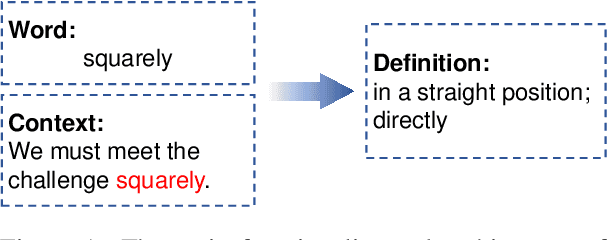
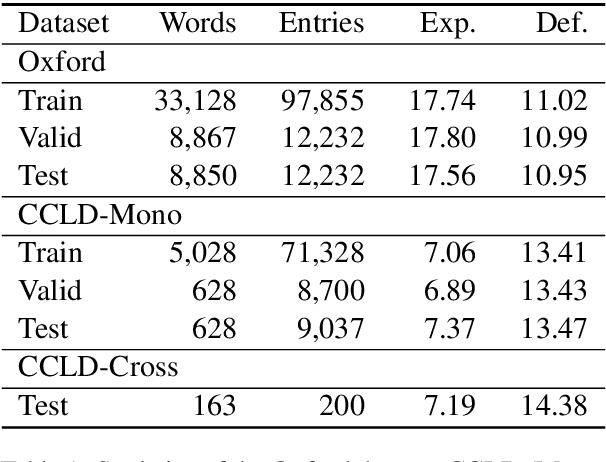
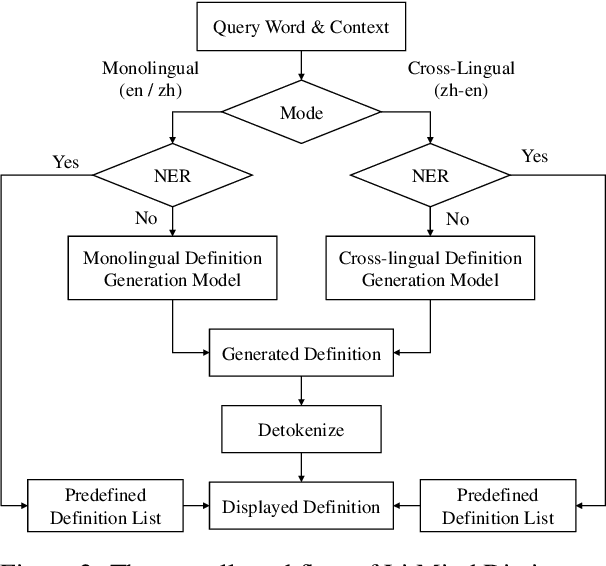
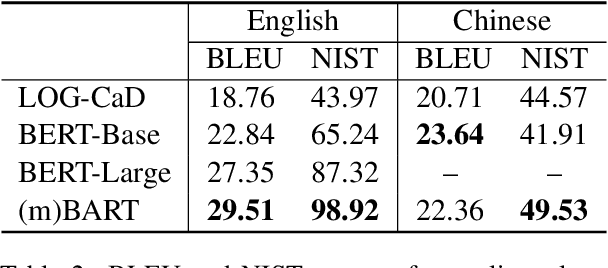
Abstract:Dictionaries can help language learners to learn vocabulary by providing definitions of words. Since traditional dictionaries present word senses as discrete items in predefined inventories, they fall short of flexibility, which is required in providing specific meanings of words in particular contexts. In this paper, we introduce the LitMind Dictionary (https://dictionary.litmind.ink), an open-source online generative dictionary that takes a word and context containing the word as input and automatically generates a definition as output. Incorporating state-of-the-art definition generation models, it supports not only Chinese and English, but also Chinese-English cross-lingual queries. Moreover, it has a user-friendly front-end design that can help users understand the query words quickly and easily. All the code and data are available at https://github.com/blcuicall/litmind-dictionary.
 Add to Chrome
Add to Chrome Add to Firefox
Add to Firefox Add to Edge
Add to Edge